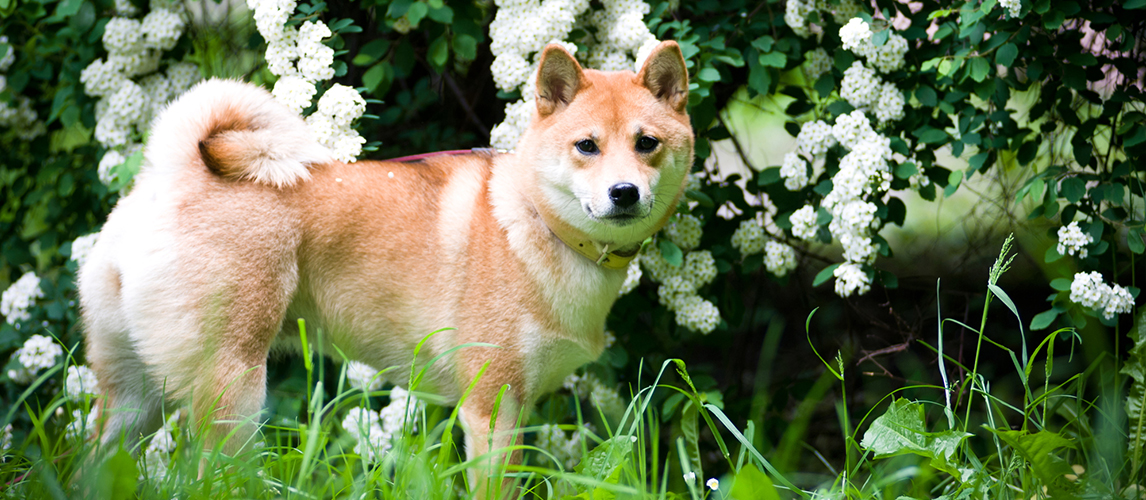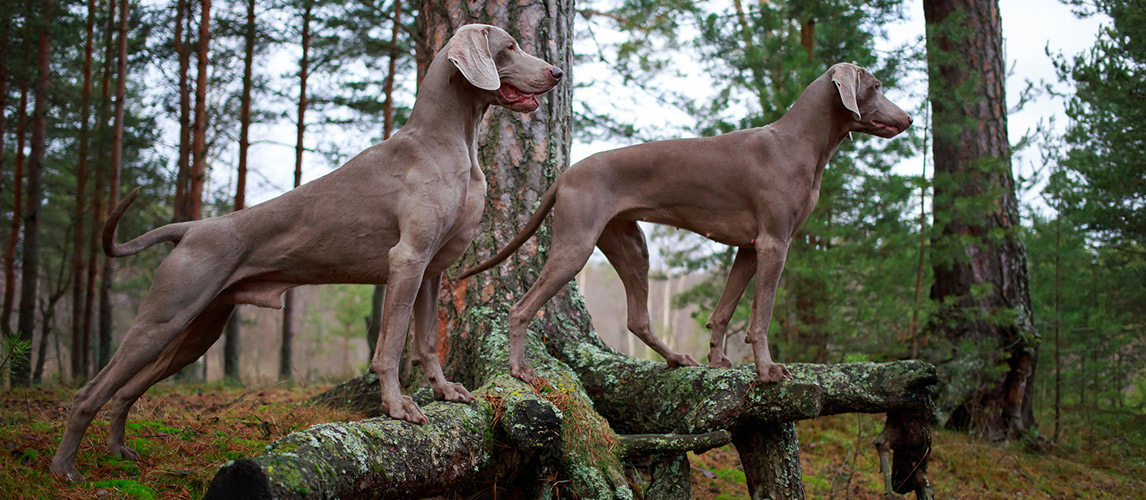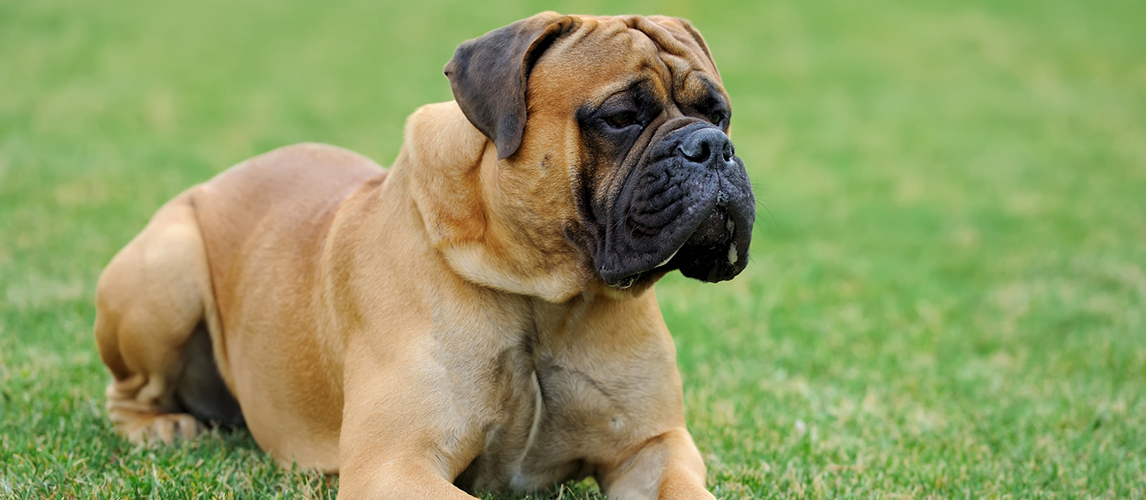
The Best Dog Food for Blue Heelers in 2022
- Home
- Dogs
- Dog Foods & Nutrition
- Dog Food By Breed
Blue Heelers are intelligent and resourceful dogs who are very hard working and protective. They are sometimes called American Cattle Dogs or Australian Cattle Dogs. They are usually working dogs and are used to herd livestock so they need the best food for cattle dogs to give them plenty of energy and stamina and to help them build strong muscle for running.
Working dogs need a particular diet. You will need to feed them twice a day and they need plenty of calories. An age-specific premium food that delivers plenty of protein and fat and which is packed with lean meats and healthy vegetables will be ideal. To help you make the right choice, check out our guide to the best dog food for blue heelers.
The Best Dog Food for Blue Heelers
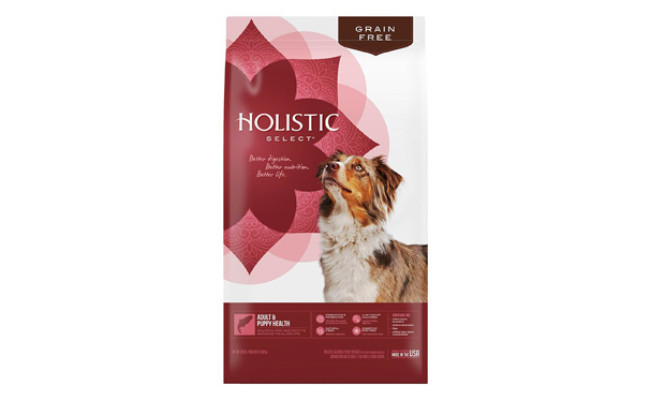
This blue heeler dog food recipe provides complete and balanced nutrition for active dogs. There is a minimum of 29 % protein for building lean muscle and 14 % fat to deliver plenty of energy. It is based on salmon, anchovy and sardine meal which are all high quality sources of amino acids.
To maintain intestinal health, there are prebiotics and probiotics to populate the gut with friendly bacteria and natural fiber (beet pulp) to keep poops regular and reduce gas and bloating. There are also live yogurt cultures and digestive enzymes to assist with the digestion of food. It’s packed with natural fruits and vegetables to deliver antioxidants and has no wheat or soy.
29 % protein for building lean muscle
14 % fat to deliver plenty of energy
Prebiotics and probiotics for a healthy digestion
Fresh fruit for antioxidants
- Brand: Holistic Select
- Model: 31102
- Weight: 24.4 pounds
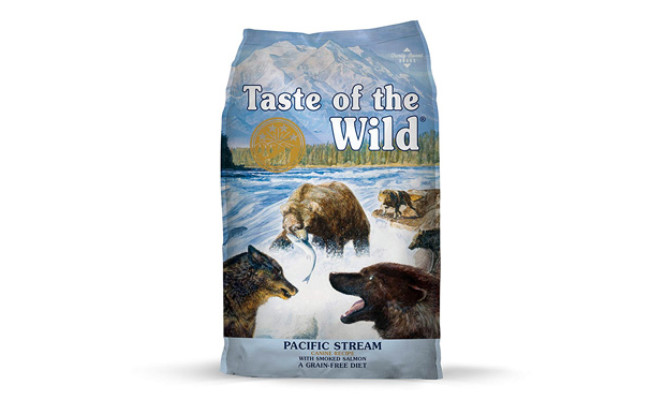
Based on the diet of wild dogs, the primary ingredients of this recipe are salmon and ocean fish meal which deliver 25 % protein. The fat content is 15 % to deliver plenty of energy for a dog that runs all day. The carbohydrates (peas and sweet potatoes) are easy to digest.
This formulation is for adult dogs and contains probiotics that are most suitable for canines; every pound contains 80 million live cultures. The wild chicory root is highly beneficial for digestion. The recipe is packed with super foods such as blueberries and tomatoes which deliver valuable antioxidants to help prevent cell damage. There are no grains in the recipe. Taste of the Wild Pacific Stream is one of 7 dog food recipes mentioned in our Taste of The Wild Dog Food Review.
25 % protein from salmon and ocean fish meal
15 % fat for energy production
80 million live cultures per pound of food
Blueberries and tomatoes deliver antioxidants
- Brand: Taste of the Wild
- Model: 9565
- Weight: 28 pounds
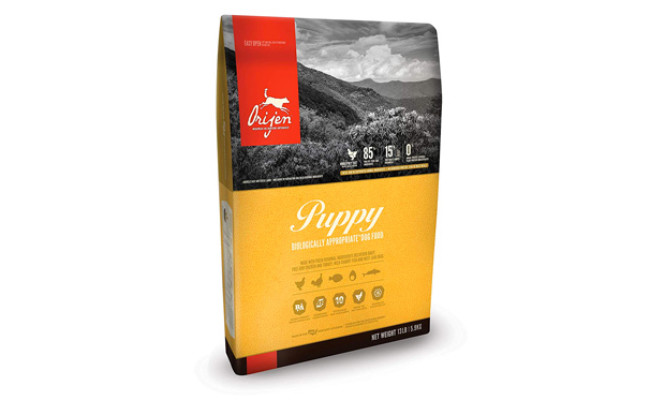
This dried blue heeler puppy food is for puppies and delivers everything they need to grow and develop. There is at least 38 % protein to support your pup’s growth and development. The source of the protein in the recipe is mainly deboned chicken and deboned turkey and flounder but some is provided by eggs and Atlantic mackerel. To make it similar to the diet of wild dogs, it also contains animal organs including turkey liver and chicken and turkey hearts.
There are chondroitin and glucosamine to support healthy joints and omega oils to keep the skin healthy. A full 15 % of the ingredients are fruits, vegetables and botanicals such as apples, pears and pumpkin which deliver valuable micro-nutrients and antioxidants. There are no grains and no tapioca.
Take a look at our detailed guide on Orijen Dog Food.
38 % protein to support growth and development
Contains animal organs
Chondroitin and glucosamine for healthy joints
15 % of the ingredients are fruits, vegetables and botanicals
- Brand: Orijen
- Model: DOR4400-13
- Weight: 12.9 pounds
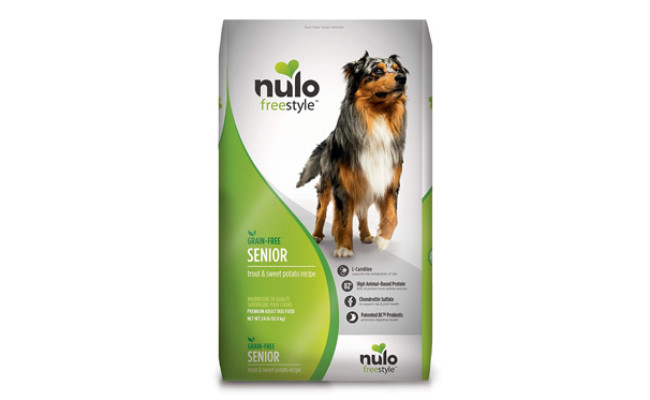
A senior dog food that has everything that an older dog needs to maintain their health and fitness. To keep their muscles strong there is 30 % protein and to give them loads of energy there is 12 % fat. The protein sources include deboned trout, turkey meal and salmon meal which promote lean muscle and a healthy heart.
There are omega oils to nourish your dog’s skin and plenty of fresh fruit and vegetable to provide the vitamins C and E that are needed to keep the immune system healthy. There are probiotics to keep the digestion healthy and glucosamine and chondroitin for healthy joints. Nulo Freestyle Senior Trout & Sweet Potato is one of 5 recipes included in our review of Nulo Dog Food.
30 % protein for healthy muscles and heart
12 % fat to provide energy
Omega oils to nourish the skin
Vitamins to support the immune system
- Brand: Nulo
- Model: Senior Trout & Sweet Potato
- Weight: 1 pounds
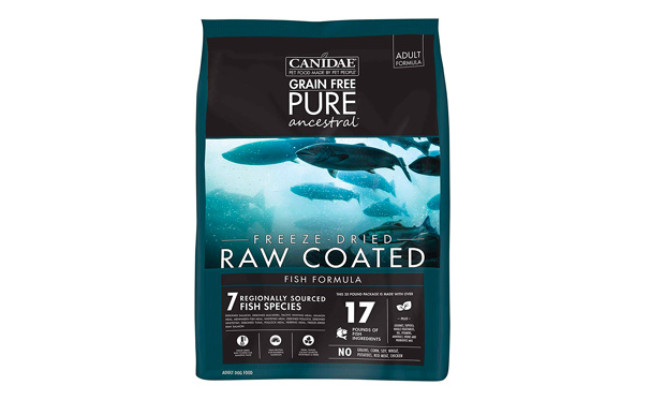
There are no fewer than seven sources of fish protein in this premium dog food including deboned salmon, Pacific whiting meal and freeze dried raw salmon. This delivers at least 36 % protein. To provide energy, there is 12.5 % fat.
To provide balanced and complete nutrition, there are plenty of vegetables, oils and added vitamins and minerals as well as probiotics to aid digestion. There are no grains, corn, wheat or soy. This recipe contains no red meat or chicken.
Read here our detailed CANIDAE Dog Food Review.
Seven sources of fish provides 36 % protein
12.5 % fat content
Probiotics to aid digestion
Plenty of vegetables, oils and added vitamins
- Brand: Canidae
- Model: 1858
- Weight: 20 pounds
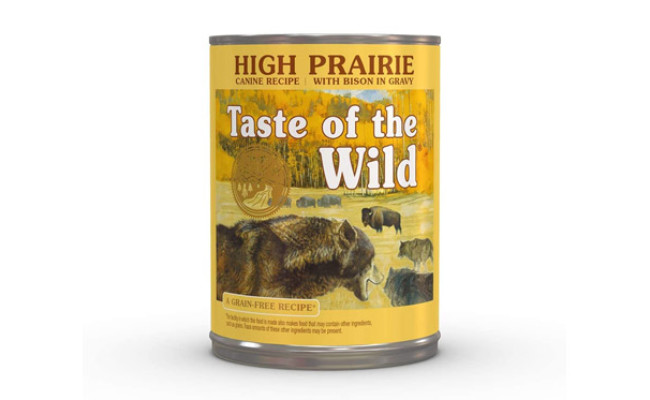
Taste of The Wild pride themselves on their delicious grain-free recipes. Containing real meat chunks packed with protein to support your dog’s muscular health and strength. This gravy-filled canned food is rich in nutrients and vitamins to maintain your dog’s overall health, as well as containing fatty acids to keep their skin and coat healthy.
It is important that your dog be able to digest their food well in order to receive the full benefits of their meal. Taste of The Wild produces highly digestible food with the use of probiotic fiber coming from ingredients such as sweet potato, raspberries, and blueberries. This grain-free recipe also avoids troublesome ingredients like wheat, corn, filler, and artificial colors, flavors, and preservatives. All in all a well-rounded, irresistibly delectable dog food.
Minimum 8% protein densely packed for tasty meaty chunks.
82% moisture for added flavor and easy digestion.
Grain-free recipe ideal for dogs with food sensitivities.
Folic acid to support your dog’s overall health.
- Brand: Taste of the Wild
- Model: 074198610761
- Weight: 12 x 13.2oz cans
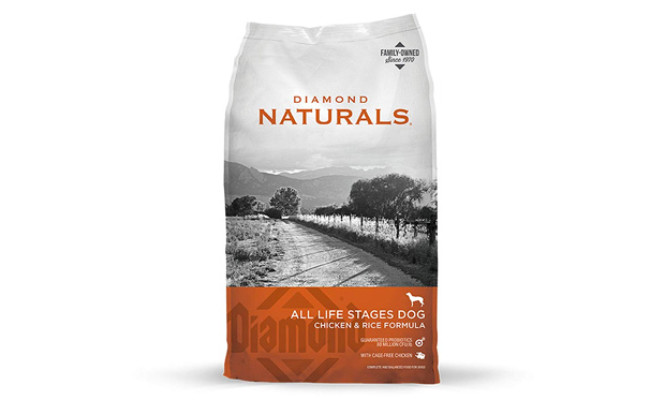
A grain-free recipe that is suitable for dogs of all ages. It has a protein content of 26 % and the protein sources are cage-free chicken and chicken meal as well as chia seeds and quinoa. The fat content is 16 % to provide energy for running around all day.
There are powerful antioxidants provided by blueberries, oranges and spinach which support the immune system. There are omega oils provided by flaxseed and phytonutrients provided by foods such as kale and carrots. The recipe delivers a blend of fibers supplied by dried chicory root to support a healthy digestion.
Protein content of 26 %
Contains cage-free chicken and chicken meal
Antioxidants provided by blueberries, oranges and spinach
Blend of fibers to aid digestion
- Brand: Diamond Naturals
- Model: 1312_40_DCR
- Weight: 1 pounds
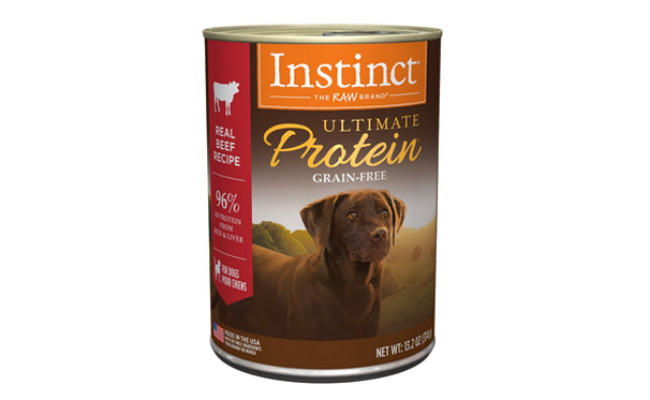
A wet canned dog food that delivers 11 % protein of which 96 % is provided by beef and liver. There are plenty of healthy vegetables including peas and carrots to deliver balanced nutrition.
The micronutrients have been added to support overall health. These include vitamins, minerals and super foods such as blueberries to provide antioxidants. It contains no grain, corn, wheat, soy or carrageenan which can trigger food sensitivities.
11 % protein provided by beef and liver
Wet canned dog food
Healthy vegetables
Super foods for antioxidants
- Brand: Instinct
- Model: 769949518112
- Weight: 0.96 ounces
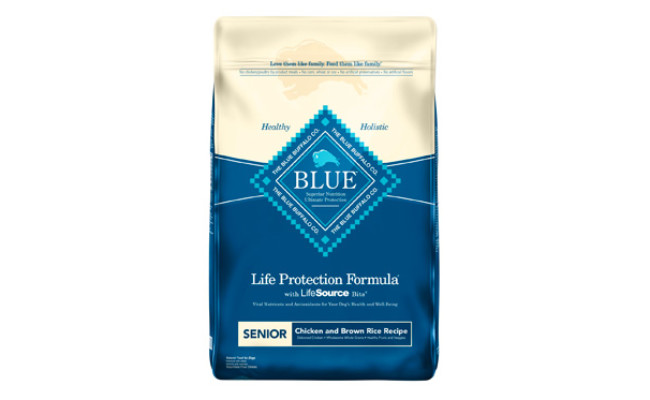
The primary ingredient of this dried dog food is deboned chicken and it delivers 18 % protein to build healthy muscle. It also contains wholesome whole grains including brown rice and oatmeal. The healthy garden vegetables such as peas and sweet potatoes deliver balanced nutrition and micronutrients.
Antioxidants are delivered by the blueberries and cranberries and there are omega oils for a healthy coat and nourished skin. This recipe is specifically designed for senior dogs and contains glucosamine and carnitine for healthy joints. Blue Buffalo Life Protection Formula Chicken & Brown Rice is one of 10 dog food recipes mentioned in our review of Blue Buffalo Dog Food.
18 % protein for strong muscle
Formulated for senior dogs
Wholesome whole grains including brown rice
Blueberries and cranberries for antioxidants
- Brand: Blue Buffalo
- Model: 17
- Weight: 30 pounds
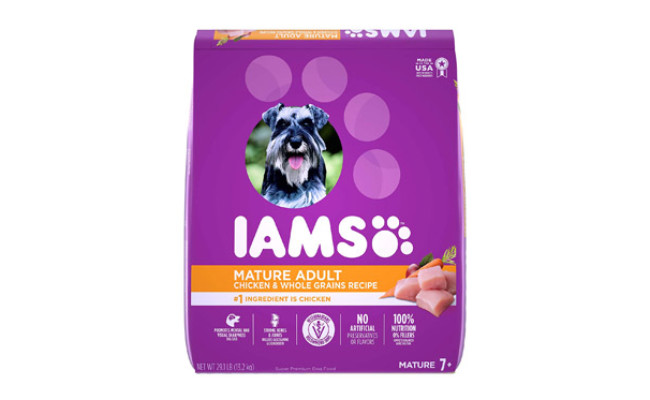
For the active senior dog, or for the aged pet that is starting to slow down, you need a focused diet to keep them healthy with plenty of energy-boosting nutrients and protein. IAMS Proactive Health for mature dogs is a delicious dry food recipe that will help to keep the bounce in your older pet’s step.
Farm-raised chicken is the number one protein source, to help keep their muscles lean and strong. Together with selected carbs, including wholegrains, carrots and probiotic-rich beet pulp, this tasty formula is designed to also support their immune system, promote eye and brain function and boost their joint health. Iams ProActive Health Mature Adult Dry Dog Food is one of 5 recipes included in our review of the Iams Dog Food.
Formulated for older cattle dogs
Farm-raised chicken for protein
Supports eye, joint and brain health
Probiotics for a healthy digestion
- Brand: Iams
- Model: 10171583
- Weight: 29 pounds
Best Dog Food for Blue Heelers Buying Guide & FAQ
Ingredients to Look for in a Dog Food for Blue Heelers
There are plenty of dog foods on the market but they are not all suitable for hard working and very active dogs. To help you find the best food for blue heeler dogs, here is a list of the main ingredients that you should be looking for.
- Animal sources of protein
Protein is essential for any dog but even more so for active dogs. Look for quality high protein dog food with animal source of protein such as deboned chicken or wild caught fish.
- Healthy fruit and vegetables
These are a vital source of fiber, protein, vitamins and minerals and carbohydrates. Look out for super foods such as spinach and sweet potatoes as well as blueberries and carrots.
- Omega oils
These are essential for nourishing the skin and keeping the coat in great condition. They are provided by ingredients such as flaxseed and fish oils.
You may also like our reviews of Fish Oils For Dogs and Salmon Oil For Dogs.
- Vitamins and minerals
These micronutrients are needed in small quantities to keep your dog healthy. They include calcium for healthy bones, vitamins for a healthy immune system and antioxidants to prevent cell damage.
- Glucosamine and chondroitin
These supplements are essential for maintaining joint health in dogs that are prone to arthritis and who have an active lifestyle.
Take a look at our guide on Glucosamine for Dogs.
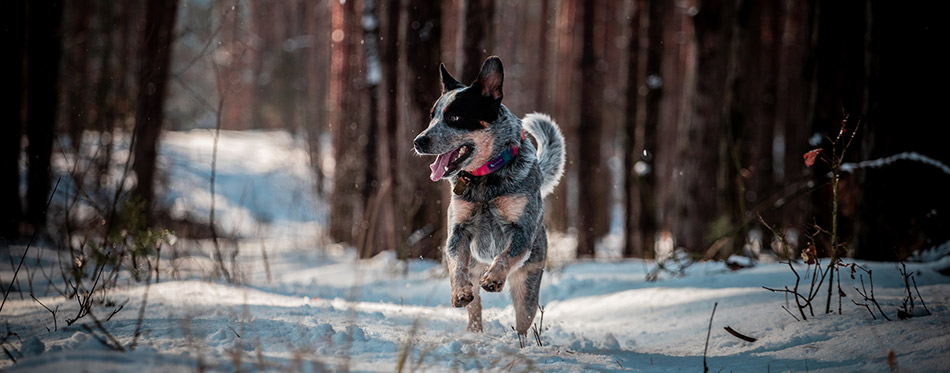
Blue Heelers Diet and Nutrition
Blue Heelers have some specific diet and nutritional requirements because they lead such an active lifestyle.
They need a high protein food content because protein provides amino acids which are the building blocks of strong, lean muscle. A dog needs animal sources of protein because their bodies are designed to digest this and it provides all of the 10 essential amino acids for canine health. Not all animal protein sources are the same – the best options are lean meats and fish.
Fat is also essential for providing energy so you need to look for a high fat content. A Blue Heeler will need a higher fat content than a lap dog such as a Chihuahua would.
Carbohydrates are useful for a Blue Heeler because they provide further energy and fiber. However, they need to be easily digestible sources of carbohydrates so look for foods that contain whole grains (unless allergies are an issue), starchy vegetables such as sweet potatoes and legumes. In order to keep your dog’s digestion healthy, look for a fiber content of around 3% to 5%. Added to this, there should be prebiotic fibers such as chicory root and probiotics.
Your vet will be able to give you a detailed blue heeler feeding guide based on your dog’s specific dietary and nutritional needs taking into account their age, health and lifestyle. However, as a general rule of thumb, a Blue Heeler pup needs a food with at least 22% protein and 8% fat. The protein and fat sources should be high-quality animal ingredients.
An adult Blue Heeler needs at least 18% protein and 5% fat but will need more if they are a very active working dog.
A senior Blue Heeler will be less active and may start to put on weight. It may help if you switch them to a diet that is specifically designed for senior dogs. This is also likely to have the supplements required to support aging joints. For more options, check out our detailed review of the best supplements for older dogs.
Food to Avoid Feeding Your Blue Heeler
To keep your Blue Heeler healthy and happy, there are a few foods that you should avoid feeding them. Here are the main ones but for further advice you should speak to your vet.
- Foods that harm dogs
You need to be very careful if you are planning on feeding human food to your Blue Heeler. This is because there are some human foods that can cause huge health problems in dogs. Chocolate contains a chemical called theobromine which is harmless to humans but toxic for dogs. Other examples are macadamia nuts and grapes and raisins.
- Vegetables that are harmful
On the whole, vegetables are very beneficial for dogs. They are found in commercial dog foods and make tasty snacks. However, onions, garlic and chives are the exception to this. They can cause damage to red blood cells and anemia. Even pizza with onion in it and baby food can cause a problem.
- Bones
Bones are a natural part of your dog’s diet but you need to exercise caution. Never give your dog cooked bones as they can splinter and can cause tooth damage as well as intestinal blockages.
- Cheap fillers
Unfortunately, you get what you pay for when you buy dog food. The cheaper foods contain cheap fillers which provide empty calories. They are packed with cheap grains which offer little nutritional content and do not satisfy your dog’s appetite for long.
- Common allergens
The Blue Heeler is not one of the breeds that are especially prone to food allergies but it still makes sense to avoid the common culprits. You may want to avoid foods that contain corn, wheat or soy or which have processed meat by-products meals.
- Artificial ingredients
To support a healthy lifestyle, your dog needs a diet that is as close to what they would eat in the wild as you can get it. That means no artificial colors or flavors. They are not necessary and can cause adverse reactions.
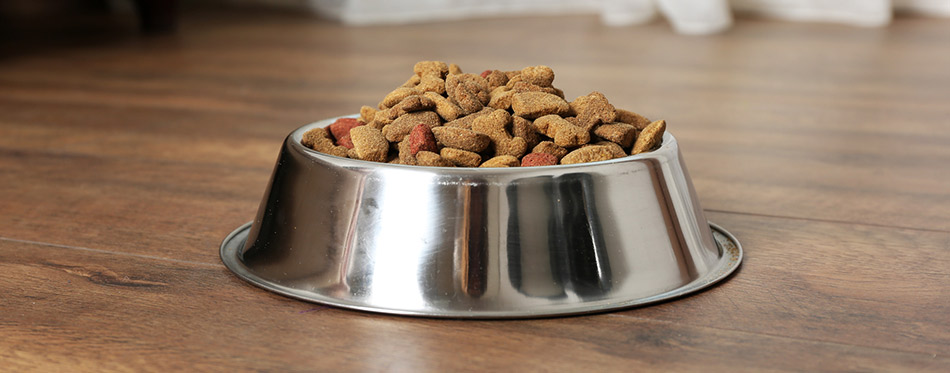
Common Health Problems Blue Heelers – How Diet Can Help Them
Blue Heelers are one of the breeds that usually enjoy a long and healthy life. They can live for up to 14 years. However, they can suffer from some musculoskeletal issues and many of these are inherited. These include arthritis (which develops over time), elbow dysplasia (where the arm bone pops out of the socket), hip dysplasia and patellar luxation (kneecap slipping out of place). It is important that your pup has been genetically tested by a reputable breeder.
Diet can play an important role in supporting joint issues. Sufficient calcium and phosphorous at the correct ratio are important to support healthy bone development. Blue heelers need a high protein diet so that the muscles will remain strong to support the joints.
All musculoskeletal issues will benefit from extra glucosamine and chondroitin supplements. These are very important for supporting healthy joints and lubricating the parts where one bone moves across another. These will be listed on the nutritional information that is provided with every dog food.
Best Dog Food for Blue Heelers FAQ:
Q: How much food should I feed my Blue Heeler?
A: Because Blue Heelers are very active dogs, and are often working dogs, they will need a lot of calories to fuel their energetic lifestyle. An average Blue Heeler will weigh between 30 and 50 pounds as an adult.
You may also like our review of Dog Food for Weight Gain.
You need to feed your dog around 20 to 30 calories per pound of their body weight every day. However, you have to adjust this to suit your dog. You may find that if your dog is used for regularly herding farm animals or if they take part in dog sports, they will need more calories per day. In this case, it would be appropriate to feed them 30 to 35 calories per pound daily. You can seek further guidance on how to monitor your dog’s weight from your vet.
Q: How often should I feed my Blue Heeler?
A: Blue heelers are very active dogs and can spend large parts of the day running around. This means that they require a constant source of calories. Most pet dogs are fed once a day. However, this may not be sufficient for such a hard-working dog.
Once you have chosen a food for your dog, have a careful look at the feeding instructions. This will indicate how much to feed them. This amount needs to be divided up equally between the number of feeds that they get in a day. Bear in mind that it is not a good idea to feed them immediately before exercise as this can lead to intestinal issues such as bloat.
Blue Heeler pups will need three meals a day. As your dog gets older, this can be reduced to two meals. It is not appropriate to reduce it to one meal. However, if you have a very active dog, it would be sensible to stick to three meals.
Q: What vegetables can Blue Heelers eat?
A: Your dog may be a carnivore (meat eater) but that does not mean that they cannot enjoy some healthy fruit and vegetables. Plants are an essential part of your dog’s diet and are a constituent of many commercial dog foods. You can also use cooked vegetables in any home-prepared food that you make. Raw vegetables make a very tasty alternative to calorie-rich and sugar-laden commercial dog treats which will just make your pooch pile on the pounds.
So, which vegetables are good for your Blue Heeler and which ones must you avoid? Here are some ideas on which vegetables your dog can eat.
These are considered to be one of the super foods for humans as well as dogs! They are packed with vitamins A, E, B6 and C and so they deliver powerful antioxidants to help prevent disease and cell damage. They also deliver calcium, iron and thiamine. They taste great and dogs love them.
- Pumpkin
Don’t save the pumpkin for the holidays, you can give it to your pooch all year round. Pumpkins are a fantastic source of gentle fiber and promote intestinal health in dogs. They also have vitamin A and lots of antioxidants to combat free-radical damage.
- Spinach
We all know that spinach delivers a lot of iron. Did you know that it also helps to prevent inflammatory disease, cardiovascular disease and cancer?
- Green beans
These are packed with omega 3 fatty acids which nourish the skin and promote a healthy coat. They also contain calcium, copper, potassium, thiamin and many other micronutrients.
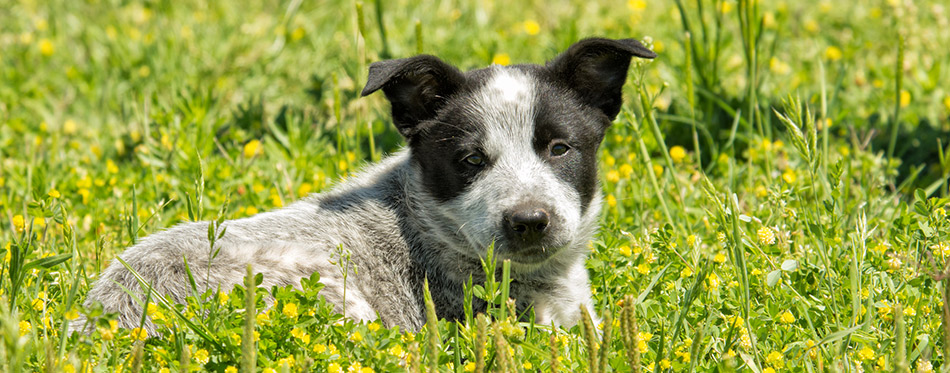
Our Top Pick – Holistic Select Adult & Puppy Health
Our pick of the best dog food for blue heelers provides balanced nutrition for active dogs. There is a minimum of 29 % protein and 14 % fat to suit hard-working canine. It is based on salmon, anchovy, and sardine meal to provide amino acids.
To maintain intestinal health, there are prebiotics and probiotics in this blue heeler dog food to populate the gut with friendly bacteria natural fiber (beet pulp) to keep poops regular and reduce gas and bloating. There are also live yogurt cultures and digestive enzymes to assist with the digestion of food. It’s packed with natural fruits and vegetables to deliver antioxidants and has no wheat or soy.
Source:
- Australian Cattle Dog, PetMD
Sharon is a Ph.D. scientist and experienced pet content writer. As a life-long animal lover, she now shares her family home with three rabbits, a Syrian hamster, and a Cockapoo puppy. She has a passion for researching accurate and credible information about pets and turning it into easy-to-understand articles that offer practical tips. When it comes to our furry friends, she knows that there is always something new to learn!
